.
What is your history with Tarzan? Have you been a life-long fan?
What is it about his character and the character of Jane that drew you
to their story?
Tarzan was my first pre-pubescent heartthrob. After all, what
girl wouldn’t crave the undying affection of a gorgeously muscled, scantily
clad he-man (and an English lord at that) living free from the confines
of civilization in a lush paradise? Though I’d read Tarzan comic
books, I’d never dipped into a single Edgar Rice Burroughs novel.
Yet Tarzan and Jane were as hard-wired into my fantasy life and consciousness
as any characters in popular culture. I was intrigued by “Sheena Queen
of the Jungle” (the leggy blonde Irish McCalla who had her own TV series
and ruled her domain without a man). But while Sheena had a better
outfit – a seductive little leopard skin number, gold upper-arm bracelet,
spear, and that curved horn she’d blow in times of danger, the peppery
sophisticate, Maureen O’Sullivan, as Jane had a full-blown romance in paradise
with the hunky (if dumb) Tarzan. So what if she stood – as actresses
did in those days – in a sophisticated slouch with hands on hips and was
somehow a cosmopolitan lady underneath it all? And who cared that
after a scintillating start in the early 30s with her revealing two-piece
outfit and a four-minute-long fully nude swimming sequence with Tarzan
her tog became a high-necked, brown leather housedress? It was all
right. The movie-Jane still lived a wild, unfettered life, cavorting
with animal friends in the tree-tops, chasing through one hair-raising
adventure after another, and (gasp!) living in sin with a half-naked Adonis.
“JANE: The Woman Who Loved Tarzan” is the Tarzan and Jane story from
the lady’s perspective, but in the Tarzan historical timeline, where does
your story begin and end?
In many ways I tried to stay true to the timeline of the first ERB novel
in the series, Tarzan of the Apes, which takes place just
after the turn of the twentieth century. However, the history of
how young John Clayton came to be abducted from his noble English parents
marooned on the West African coast and taken to live with the “Mangani”
tribe of anthropoid ape creatures, does not come at the beginning of the
story as Burroughs told it, but somewhere in the middle, as a literary
flashback. Tarzan’s meeting with Jane is still the pivotal moment
of the plot, and only several months pass before my novel ends.
Is this a one-shot book or are you planning a series that mirrors
the Tarzan timeline?
While I don’t foresee anywhere near twenty-four books or staying true
to the Tarzan timeline, if the response to JANE is good,
I have three more ideas that I’ve pitched to the ERB estate. Two
are original, only using Tarzan and Jane as characters with some concepts
that Burroughs touched on lightly, and another adheres more closely to
one of the books in the Burroughs series.
Do you have a single favorite Tarzan story or novel?
While I prefer the characterization of Jane in some of ERB’s later books,
like Tarzan the Terrible (by this time she was a strong,
capable female able to take care of herself in the jungle without her man),
and though there are several short stories in Jungle Tales of Tarzan
in which we see him as a boy learning the hard lessons of life living with
the Mangani, I have to say I’m partial to Tarzan of the Apes.
It has lots of flaws of logic, the style of writing is overblown, Jane
is a wide-eyed swooning girl who comes to Africa cared for by her black
maid, and the ending is a bit ridiculous. But I stand in awe of what
Burroughs created. The characters, his wild, breathless descriptions
and the world he invented out of thin air leave me, as a writer, entirely
humbled.
How did the Edgar Rice Burroughs estate react when you first approached
them with the idea for your novel?
I was told by the ERB, Inc. president, Jim Sullos, that had I come to
them with JANE even a year earlier, the door would have been
shut in my face. It was a strange bit of luck that the estate had
only recently decided that new novels might be considered and authorized.
I made the first pitch to Jim on the phone (with my lawyer listening in).
As soon as I said, “It’s the Tarzan story from Jane’s point of view,” he
was hooked. He loved the originality, and to my surprise, he loved
the romantic aspect of it.
Before I came into Tarzana (where the corporate offices are) to meet
with him, Jim read one of my eight historical fiction novels and decided
that I was a capable writer and had a style that would lend itself to a
Tarzan classic. This was a huge hurdle, of course. The next
was to tell him a story with a beginning, middle and end that would grab
him. I pitched for five hours. It was then I let him know the changes
I wanted to make, some of them quite significant — like the age at which
Tarzan is taken to live with the Mangani. Not one year old, but four.
I had a rationale for every major difference. Then we had to deal
with sex. According to the laws of the “Tarzan Universe,” an actual
lists of no-no’s — “Tarzan may not…take drugs of drink, be a racist,
harm women, etc.” number 17 stated that Tarzan “may not engage in illicit
sex.” This was a problem. My story was about a love affair
— two beautiful, extraordinary twenty-year-olds living alone and mostly
naked in a jungle together. It was meant to be sexy. It was
meant for adults. I told Jim that if Tarzan and Jane could not have
sex I couldn’t write the book. Then he went back to the board of
directors with my ideas and digressions from the Burroughs canon, and a
few weeks later I was given the green light. On the sex question, that
was a “yes,” but I had to promise that it would be handled tastefully.
You are known for writing fictional stories of historical figures
like Anne Boleyn and Queen Elizabeth; do you feel more freedom in expanding
on the history of a fictional character like Jane Porter?
Absolutely. In my historical fiction (which is different from
historical romance) I do massive research, and I stay as true to fact as
is possible with the history that is known. There is so much written
about Anne Boleyn and her daughter Elizabeth I that I really cannot (nor
do I want to) stray too far from fact. Two things save me from being
forced into dry storytelling. There are gaping holes in history where
nothing is known. These, as a writer of historical fiction, I get
to fill the way I choose, though of course I use what I do know about the
characters, their motivations, how they had acted at other stages of their
lives — I “extrapolate” to fill those holes. And if you carefully
choose the figures you write about, you find that the fact is oftentimes
stranger than fiction.
Just before I wrote JANE, I wrote the first novelized
version of the Romeo and Juliet story in the history of literature.
That was O, Juliet. This was where I learned how to
take literary figures and write about them, change what had been done before
(brilliantly) to my liking, expand and add detail and dialogue and, in
the case of the Italian romance, change the timeline from three days to
three months. Because of my experience with Romeo and Juliet and
having already messed with Shakespeare, I had much more confidence taking
on a second pair of iconic literary lovers. I had a ball writing
JANE.
“Jane” has received advance accolades from the Burroughs estate
and even Jane Goodall herself, but are you concerned about fan reaction
to your take on these beloved characters?
Right from the get-go I knew that there were purists and die-hard Tarzan
and ERB fans. Thankfully, Jim and the estate were behind me from
the start, encouraging me, praising my past works and every stage of the
novel — from a long, detailed written proposal to several drafts of the
manuscript. If I had not had the benefit of this support I would
have been far more nervous about the reception. Having been an author
for fifteen years gave me the advantage of knowing what was going on in
the publishing world and understanding the audience for this book, one
that was far wider than the ERB/Tarzan fans. Between 70-75% of fiction
readers are women, and I knew that women of every age were going to love
this book. I’m also known for writing strong, ahead-of-their-time
females, also popular with readers. Jane Porter is no exception.
Do you feel that male fans of Tarzan will enjoy this book?
I know they will. Most Tarzan fans are indeed men, and the male
fans who’ve read it already love it. I couldn’t be happier with the
response. Jim Sullos calls it “a masterpiece,” and John R. Burroughs
(only living grandson of Burroughs) has said, “thrills and adventure leap
off the page in the great tradition of ERB himself.” What more can
I ask?
What is it about Tarzan that has made the character so popular
over the past 100 years?
Well, he’s got everything, really. The Tarzan of ERB’s books is
big, strong, handsome, virile, has a noble spirit, is intelligent (not
the movies), but most important free from the restrictions of civilized
life. And he is human. He doesn’t have super-powers or a silly costume
with a cape. He is every man’s fantasy, and every woman’s fantasy lover.
I can’t explain it better than the late, great Ray Bradbury who said, “Burroughs
stands above all these by reason of his unreason, because of his natural
impulses, because of the color of the blood running in Tarzan’s veins,
because of the blood on the teeth of the gorilla, the lion, and the black
panther…In conversations over drinks around our country the past ten years
I have been astonished to discover how often a leading biochemist or archaeologist
or space technician or astronaut when asked: what happened to you when
you were ten years old? replied: ”Tarzan.”
As you are also a screenwriter and have connections in the film industry,
is there any chance of “Jane” being adapted for the big screen?
We will have to wait and see!
What is your favorite Tarzan film and why?
When I got started on research for JANE I watched as many
of the old Weissmuller/O’Sullivan films as I could stand (the ones I had
loved as a girl). I reached my limit when Jane stood in front of
her rather suburban tree house with an elephant elevator and said to her
and Tarzan’s adopted son, “Boy, go down to the river and get us some caviar,
and I’ll put it in the refrigerator.” To my more discerning eye, Tarzan
was just a big, dumb lug who only knew verbs and nouns.
No other Tarzan movies were remotely satisfying. The one I waited
for breathlessly in 1984 (Greystoke: The Legend of Tarzan, Lord
of the Apes) while visually beautiful, was the greatest disappointment
of them all. This Jane, a delicate, corseted Victorian lady, made
her entrance fully halfway through the movie and never put a single toe
in Tarzan’s jungle. Sacrilege! All the others were forgettable
(or like John and Bo Derek’s Tarzan the Ape Man, downright awful).
By the time of Disney’s animated version and its live action Tarzan spoof,
George
of the Jungle, were released, I was too old too care.
I’m still waiting for a truly great Tarzan movie.
Is there any chance of a similar “woman’s-point-of-view” story for
Burroughs’ The Princess of Mars, Dejah Thoris?
Of course I’ve thought of it, and even pitched it informally to Jim
Sullos, but because of the mess surrounding the really wonderful “John
Carter” movie, it’s pretty unlikely that such a novel would get much traction.
Your resume and interests look to be perfectly suited to the Steampunk
genre, have you thought about delving into Victorian science-fiction/fantasy?
Truthfully, no. I have a completed sci-fi novel that I’m re-writing
now, and an idea for a sixteenth century horror story, using one of my
most beloved characters from another of my books. But I do love the
Victorian period, its darkness and boldness. You never know what
could happen in the future.
Jane: The Woman Who Loved Tarzan will be available in bookstores
and online on September18, 2012. You can follow author Robin Maxwell at
RobinMaxwell.com
or on FACEBOOK at facebook.com/AuthorRobinMaxwell.
Learn more about the history of Tarzan in the Nerdvana article, Tarzan
of the Apes: Simian-man saga celebrates a century.


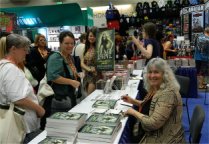
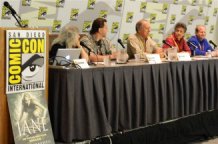
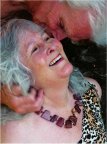
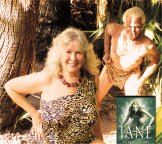
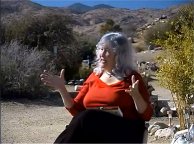
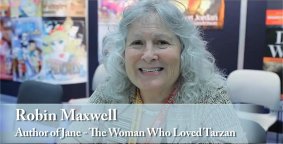



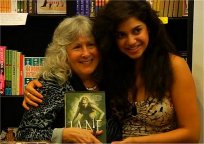
![]()

![]()